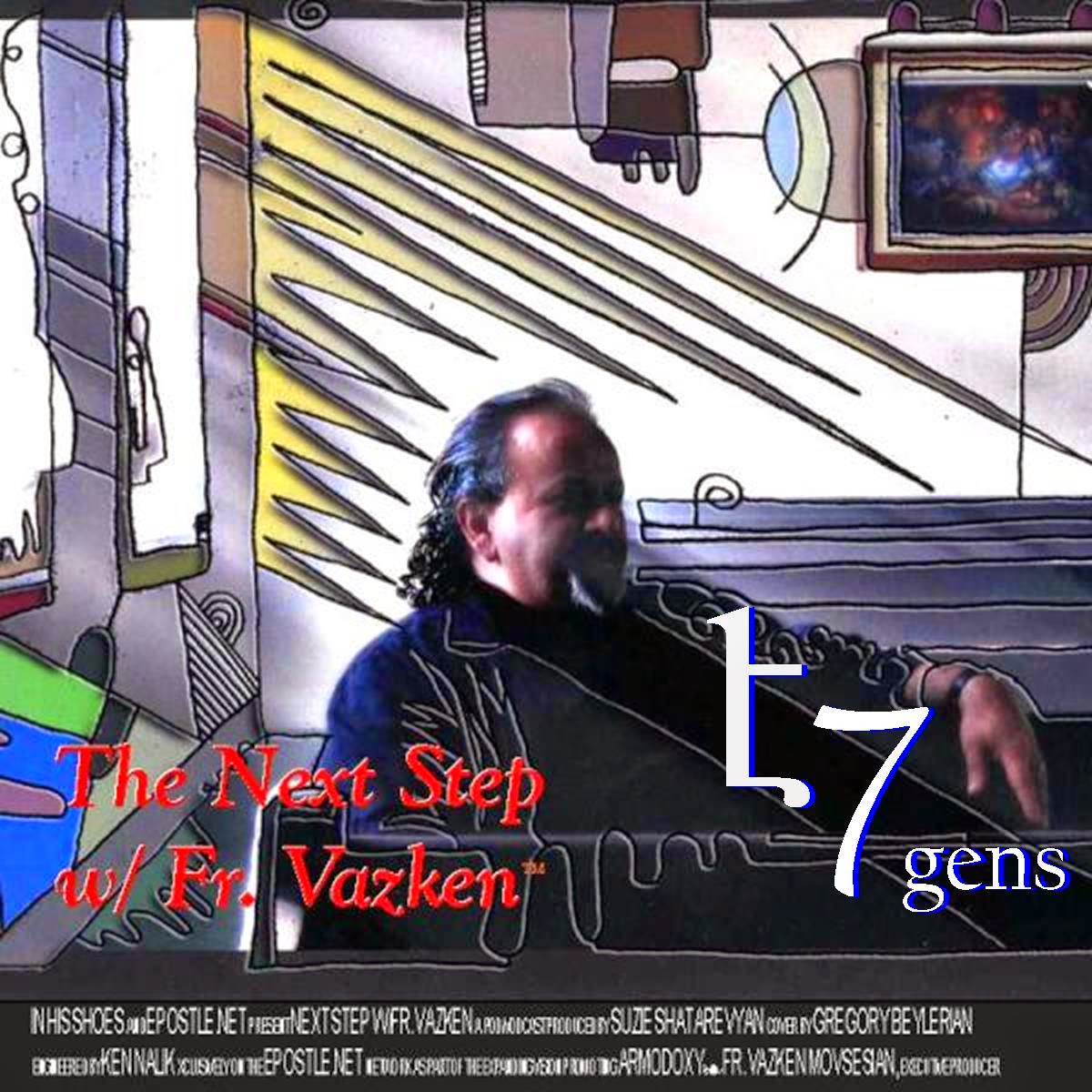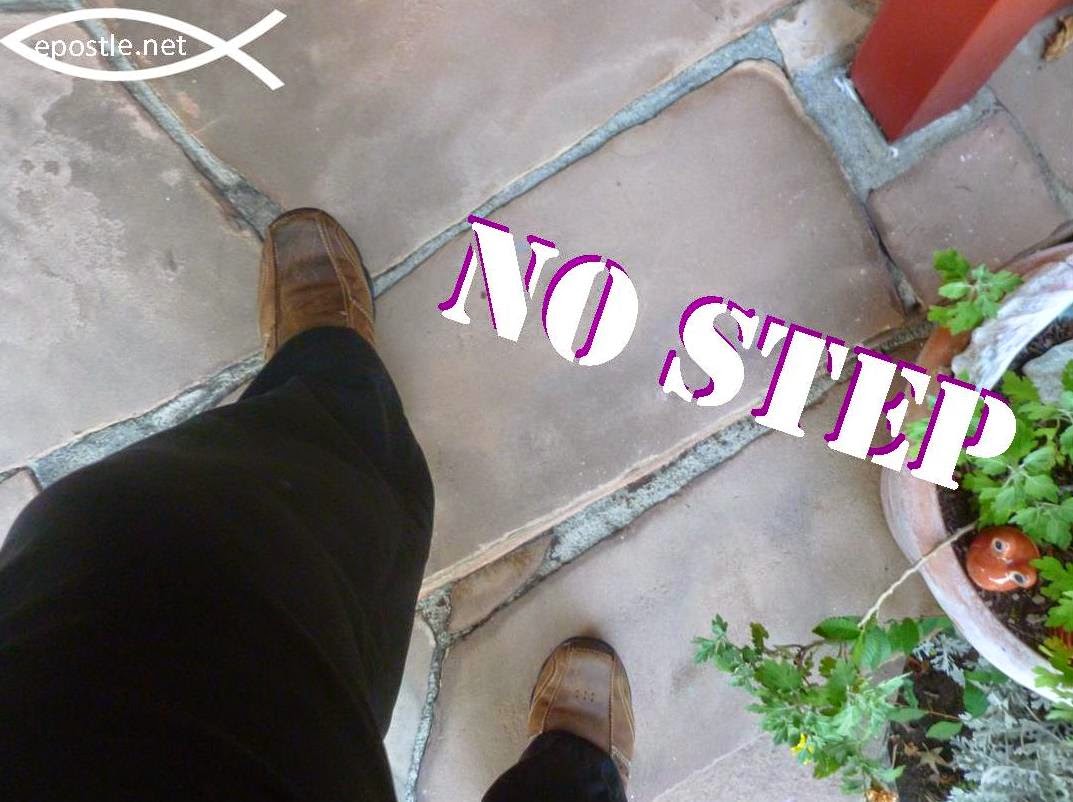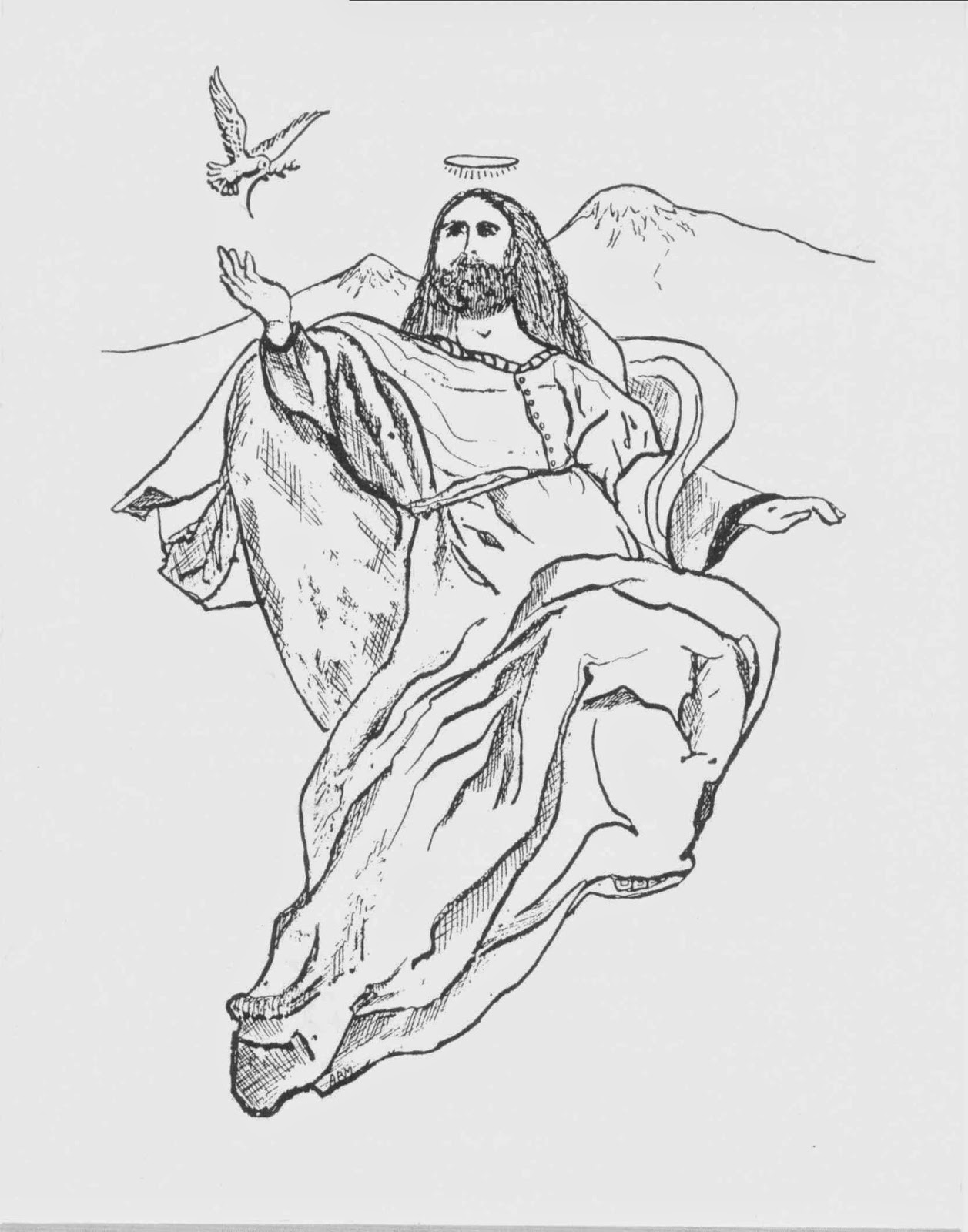Every day we wake up with news about tragedies in the world. There is the war in Syria which has claimed so many lives and the lives of children. Now there is new fighting in Iraq. There are continuing strikes between the Israelis and the Palestinians. This week we learned of the Malaysian jet that was shot down by Pro-Russian rebel forces. It is tragedy upon tragedy on the global scale that we hear about. Of course, tragedies are not confined or limited to the large disasters. Certainly there are large scale calamities – heartbreaks – in
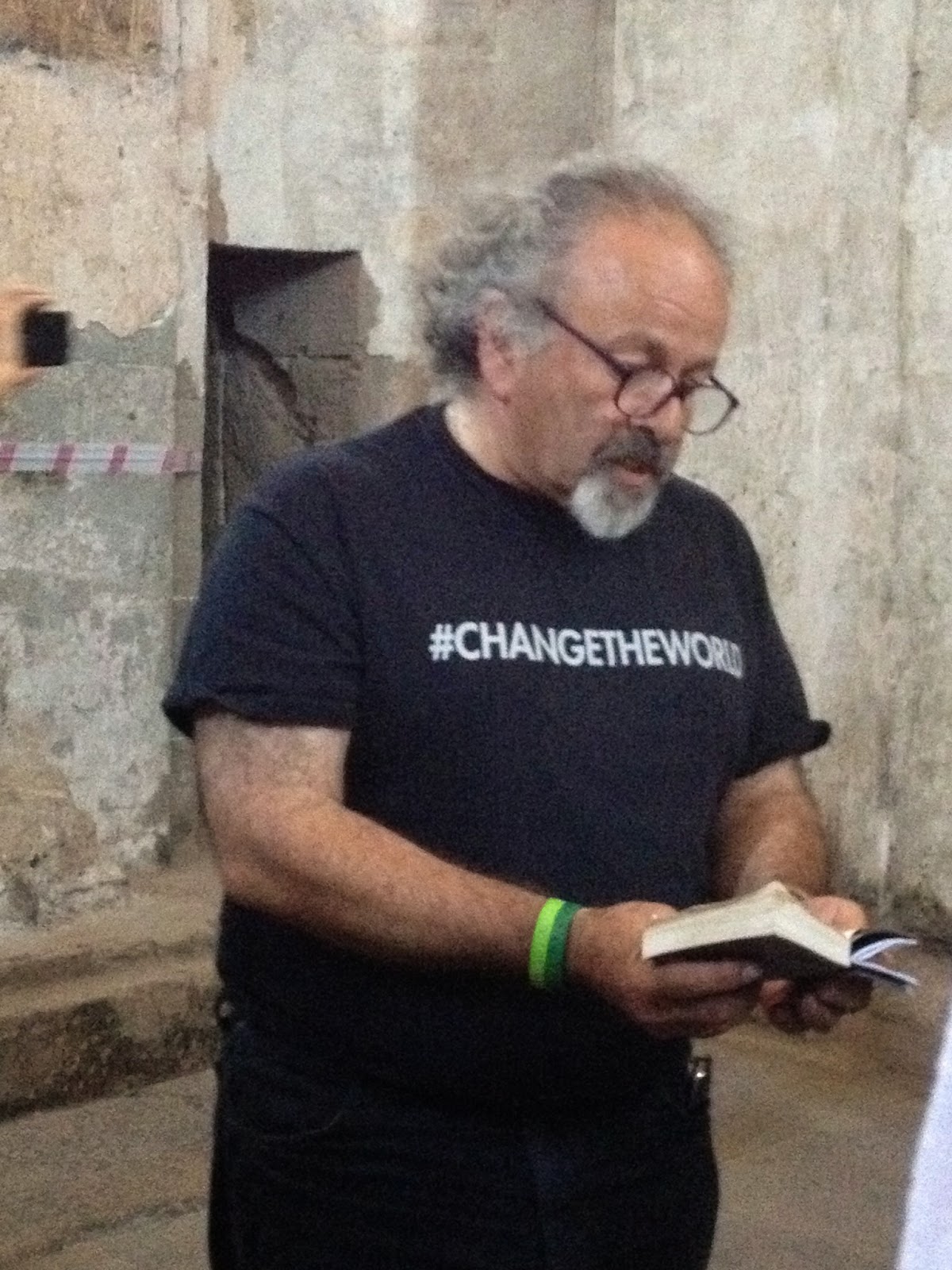 |
| Reading the Gospel at Holy Cross, Akhtamar |
our own lives, whether they are health issues, relationships gone sour, financial troubles or our general uneasiness with life. What I wish to share with you is a message of hope that I just discovered, perhaps more precisely, I rediscovered. It is a hope in the dreams that we have – for a better life, for ourselves and the world. Can we dream of peace? Can we dream of a world where love becomes the means by which we resolve our confrontations and situations? And even more important, can me realize those dreams?
On the surface, this sounds impossible, but today I wish to share with you events of the past month that have changed my life and because of those change I’m positive that there are better solutions to our life’s challenges and difficulties than what we have and the way we solve them today.
I’m convinced because I just returned from a most incredible pilgrimage to a land that is the holiest of lands. I know when I saw “holy land” your mind goes to the traditional spots, but let me share with you where the holiest of lands is. It is that land that surrounds Mt. Ararat. This land is known as the “Cradle of Civilization.” It is there where everything began. And so begins a new chapter in my life…
Our pilgrimage took us to three portions of Ararat – The Republic of Armenia, Artsakh (Nagorna Karabagh), and Historic Armenia on the Western side of Mt. Ararat (currently occupied by Turkey). I have been rejuvenated. I got a shot-in-the-arm of a powerful dose of magic, beauty and goodness. It is the magic that says, if you want to see peace don’t give up hope and keep dreaming.
Armenia is an area of the world that is land-locked – there is no way to get to it by oceans or sea. It is surrounded by hostile “neighbors.” This is a land that is at the crossroads of three continents – Asia, Europe and Africa. It is a land that has been raped and pillaged along with its people. Not only by barbarians and conquerors, not only by wars and disasters but by the ultimate in inhumanity, by Genocide! And here we find a group of people that has not only survived – despite not having military power or might – but has prospered. They have taken the dirt and changed it into grass. They have taken darkness and radiated light. They have taken filth and turned it into things of beauty.
It is not a panacea nor is it utopia. Obviously there are governments and people involved so there are interests and politics at play, much like what we see in the rest of the world. But there is hope! And that hope comes from the spiritual world.
For all of our problems we keep appealing to politics for solutions. We look to armies and militaries to solve them. We keep saying, “You fight fire with fire.” NO! You don’t fight fire with fire. You fight fire with water! And we need to develop a language that articulates this common sense approach to life. We have tried everything else. You’ve tried the politics, the military and aggression. It’s about time that you fight fire with water! … and put it out.
This is a spiritual approach because hope comes from beyond us. Dreams come from the inner workings of the being, and are made manifest in the common Faith which we call Armodoxy.
Without going out of my door, I can know all things on Earth
Without looking out of my window, I can know the ways of Heaven
The farther one travels, the less one really knows…
-George Harrison, The Inner Light
There is a tune that I first heard when I was 13 years old. I was mesmerized when I first
heard it and recently I heard a rendition of it by violinist Maxim Vengerov. The song is Le Ronde des Lutins(the Dance of the Goblins) by Bazzini. In this song, the performer hits notes that are not on the violin. Those notes do not exist in physical form but he plays them as harmonics. His bow is travelling so fast that he actually plucks the strings while he is bowing and you cannot understand nor tell how it is played. In other words he is making possible the impossible. (https://www.youtube.com/watch?v=kzB4TN7O3rU) And that’s the way I look at our mission. Can we make the impossible possible? Can we find peace – inner peace, outer peace, world peace – in seemingly impossible ways? Can we nurture the soul and spirit in a manner that will bring about peace that will allow us to have a love-life – a life full of love – and no sorrow? It is not impossible, it just requires us to speak and dialog in a language that is conducive to the vitality of the human spirit.
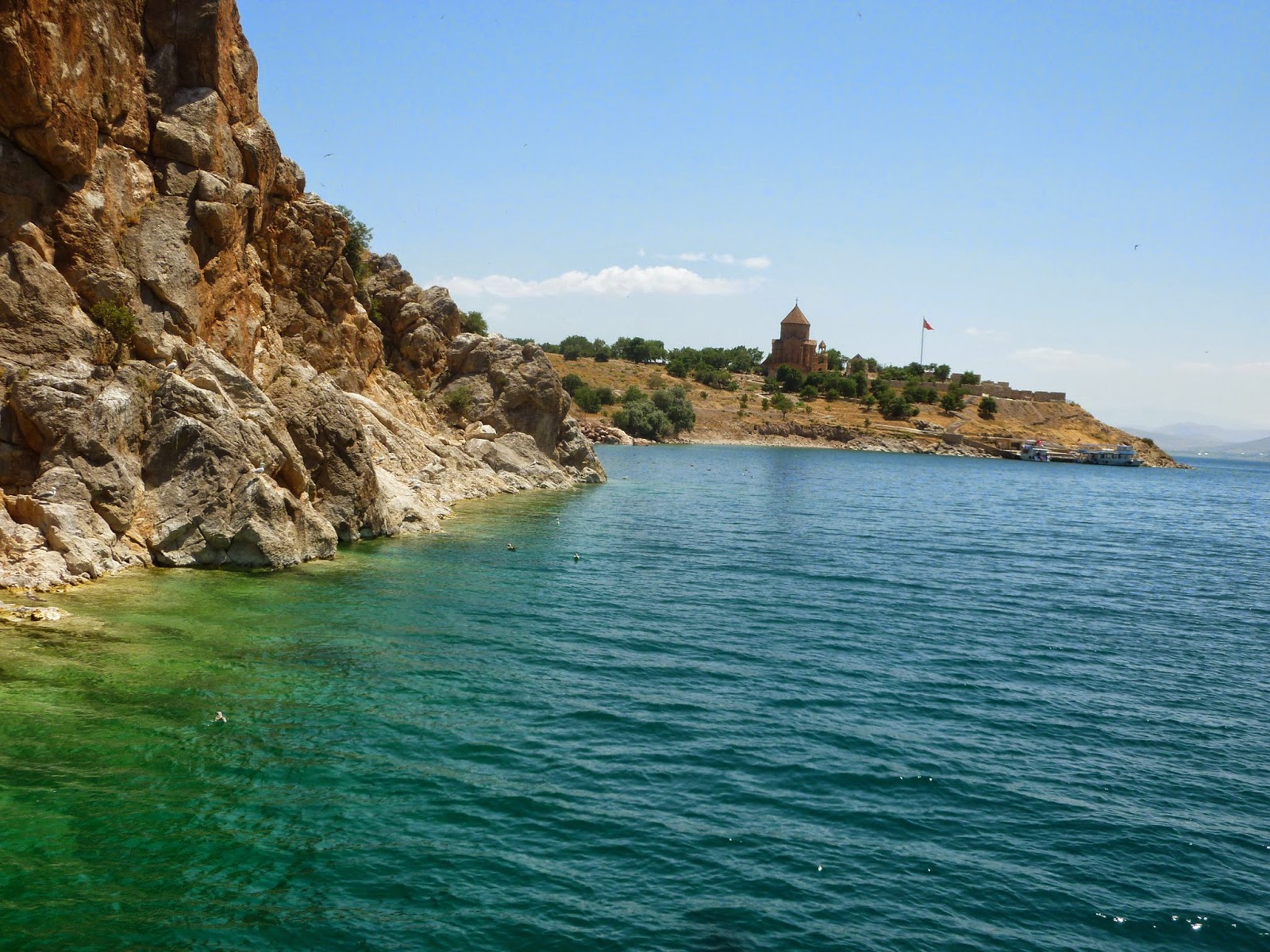 |
| Holy Cross Church at Akhtamar |
Certainly, when Jesus speaks about peace it is from another realm. “Peace I leave with you; my peace I give unto you: not as the world gives…” (John 14) This peace comes from the beginning of all eternity, that is, it comes from God. Isn’t this the peace that we are all seeking? Isn’t this the peace that the world is seeking? In particular, when we hear the stories of war and violence, of young children dying, of airplanes being blown up, of neighbors bombing each other, of daily fights and killings, we have to realize that we don’t have the answers here, but need to look beyond ourselves and our temporal plane.
I know it’s overwhelming at times. We know there are politics and interests in the world, there is cancer, and harsh people in our lives who are all beyond our control. One of holy shrines we visited on our pilgrimage was at the island of Akhtamar at Lake Van. When you walk into this sanctuary – Holy Cross – you see the Armenian writings on the walls, the Armenian icons and frescoes above the altar area, and yet, today this area is void of Armenians. The island and the church, as well as all of the historic city of Van and Lake Van are in present day Turkey. Our group of 25 went into the sanctuary and offered a pray. We sang hymns, read the Gospel and then recited the Nicene Creed. Here we proclaimed our faith in the Father, the Son, the Holy Spirit and in the Holy Church. This is a important proclamation because the Church is not an institution but the functioning Body of Christ! It is the Body that can heal. It is the Body that the woman who was bleeding for several years touched and she was instantly healed (Matthew 9:20). It is the Body that touched the sick and the lame and made them whole and functioning again. (Matthew 14:36).
As we were about to finish our prayer a Turkish guard approached us. He was in uniform and had a side arm – something very unusual for us to find inside of a church. He said to us, “It is enough.”
You have to respect the soldier; after all, we were in his (their) country. Yes, it’s hurtful. It is your church. It is your faith, but the reality is that it belongs to another. And that was an important moment for me because as much as we talk about these concepts of faith, hope and love, this was a reminder that we live in a world that is run by guns and by might. So here is the question: how can we overcome that gun without appealing to a bigger gun?
Armenia is much like the heart is to the body. It is a small and relatively little organ inside the body, but it is vital. Armenia beats and has a rhythm. It not only survives but it prospers. It builds and moves forward. We went throughout Armenia and visited shrines, churches, centers, some destroyed, some restored and some were functioning for the local communities. But in all of these sacred spaces, whether in ruins or standing upright, we found the will of people. It is that will to live, survive and prosper. On many occasions I thought to myself that had this been anywhere else in the world Discovery Channel, National Geographic and the likes would be there! They’d be producing documentaries and exploiting this treasure.
Now, can we take that little example and present it to the world? Can we take the secret that we found over there and present it to a world and people who are in dire need of an alternative to fighting and destruction? The time has come for us to exploit these places in a good manner. It is time for us to take the lessons that we learned in Armenia and provide them to the world.
Here is an interesting idea that I heard on a Ted Talk recently, it concerned the expanding universe. Back in 1929 astronomer Edwin Hubble articulated the concept of the Expanding Universe. Until then, astronomers looking up into the sky would see our Milky Way Galaxy and assume that it is the universe. After all, we knew about the forces of gravity and therefore the universe must be coming together. Hubble said and showed that it is not coming together, but it is expanding and the expansion is speeding up over time. The initial response to this was that Hubble’s discovery was a mistake. But beginning in 1998 different teams of scientists throughout the world started to verify that the universe is in fact expanding. Not just one team but different teams of scientists from different parts of the world were confirming that the expanding universe theory was not a mistake. Their findings were based on small star-light coming to us from distant galaxies. What this means is that these galaxies will, at some point, be rushing away from us at such a remarkable speed that we may not be able to see them in the future. And this is not because of technological limitations, but because of the physics. “The light those galaxies emit, even traveling at the fastest speed, the speed of light, will not be able to overcome the ever-widening gulf between us.” So astronomers in the far future, looking out into deep space will see nothing but an endless stretch of static, icky, black stillness. AND they will conclude that the universe is static and unchanging and populated by a single central oasis of matter that they inhabit” (namely our Milky Way Galaxy).
Now think about this for a moment. They will have a picture of the universe that we know is wrong! Now, suppose (and we hope) that those future astronomers will have records from our time – from the 21st century – in which we claim that the universe, “the cosmos teeming with galaxies,” is expanding. Will those future astronomers believe our knowledge? They will have no proof of it – for in fact, when they look up into the night sky they will see only black, static emptiness. Their theories will be validated by their state-of-the-art technological equipment. In turn they will think that our rendition of the universe is archaic – from the dark ages.
Remember, just since 1929 and Hubble’s claim, the theories of the fabric of space have changed dramatically. And we come up with words such as archaic, dark ages and backward to describe old ways of thought. What will people say about us in the future? Will they look at what we know as true and call us backward? Living in the dark ages? Because they will look up and only see what is dark and static. They will not see the reality that we see.
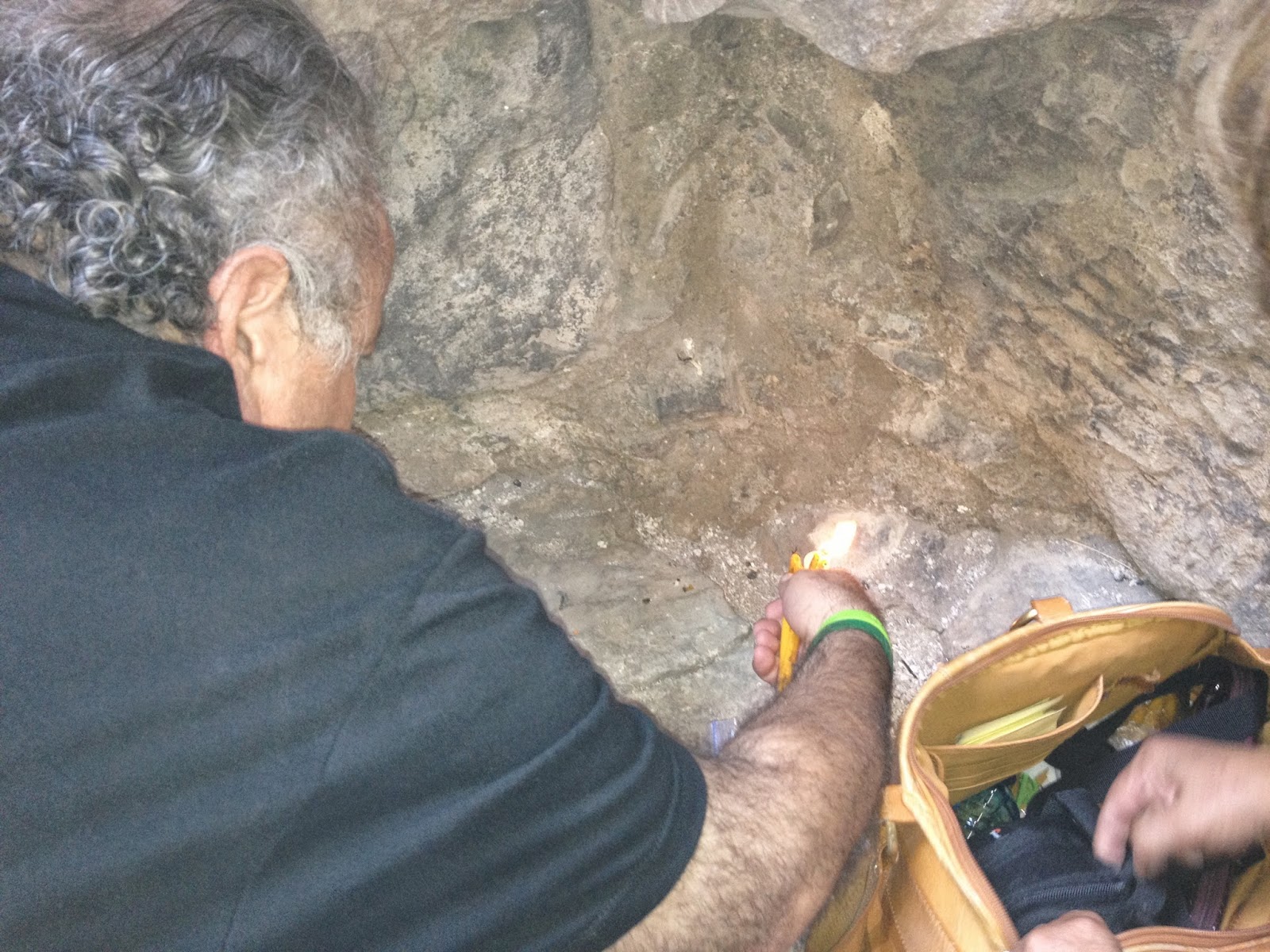 |
| Adding incense to the prayers |
Well think about us today. Do we sometimes look out at the past and past civilization and render our judgment upon them calling them backward and archaic? What could they have known? After all they were living in the villages and didn’t have the technology that we have. They were looking out at the stars, seeing the wonders and… thanking God! They looked around and said you have to have faith. They saw dire situations and said that there must be hope. What could they have known? They didn’t have military power.
What I discovered is that they did have something that qualifies as a means of survival. Is it possible that the concepts of faith, hope and love that we talk about are really the means by which we can preserve ourselves, our sanity and our world against our biggest enemy, ourselves?
As I start processing all that we discovered from our pilgrimage, in the coming months I will be presenting some of those experience and the means by which people articulate their lives around faith, hope and love. We will present means by which peace can be attained, personally and on a global level. You’ll have to step out of your box, your comfort zone, to observe and appreciate this but it will be well worth it.
For today, there are three things that I want to share with you. These points became so clear to me to me following this pilgrimage and I need to share this:
1) The Armenian Church, unequivocally was responsible for the formation of the Armenian identity we know today. The Armenian Church formed, fed, cultivated and defended the Armenian identity. Faith, hope and love are embedded in the code of that identity. This is a very difficult position to maintain given today’s world, soaked in plurality. You say, isn’t the Armenian Church expounding faith? What does that have to do with culture and with ethnicity? Well, the Church has had and has today one unique mission: the spreading of the Gospel of Jesus Christ to the world. In that Gospel we find faith, hope and love and it is articulated through Resurrection. That Resurrection is the means by which we find hope for tomorrow. It is the way we discover life. We see light. We find the faith to believe in the things we cannot see. It is the faith that we find in hearing those notes that are impossible to hit, that do not exist on the violin string but are manifest in those 0harmonics Bazzini prescribed and heard in the world in which we live in. In so doing its mission, the Church has provided the tools for a group of people to define themselves. Christianity is part and parcel of the Armenian image. What I’m saying is beyond the formation of the Armenian alphabet. The Church had a mission to reveal the Gospel to the Armenian people and therefore created the alphabet and as a result the volumes of literature were written and that literature formed and articulated Armenian culture which flourished. Beyond the alphabet and the development of language, there are volumes of literature that came out of the Church, including scientific discoveries that predate Galileo and Copernicus’ writings by centuries, defining the order of the cosmos. Through the monastic system the Church provided for the defense of the homeland. For instance, at Datev Vank (Monastery) there is the room where Karekin Ndjeh strategized against and fought against the enemies. Here is a military strategist and hero of the nation gaining inspiration and fortitude from the Church. At another monastery we find the place where troubadour, Sayat Nova – a musical artist renowned throughout the world and certainly the Middle East – lived out his last years as a priest of the Church. I stood there at that monastery looking out at the serenity that he saw and the peace that he found in his heart. The Armenian Church, what I call Armodoxy, that is, the Orthodox Faith as expounded by the Armenian Church, was responsible for the development of the Armenian psyche and identity, not as its mission but as a result of its mission. Therefore any descriptor of the Armenian people which is void of the Cross or the Armenian dome is not representing the Armenian people.
2) The Armenian Church is not only a “corner-gig.” The Armenian Church is not that place you go to be born, married and die. The Armenian Church is beyond the services it renders to the people – liturgy, baptism, marriage & funeral only. There is a spirituality and mysticism that flourished in the past and is now dormant. That is what is calling me to not only find it but to share it. In that mysticism I am coming to terms with what the mystics found and played with through the centuries. It is a connection with the universe in a very real and complete sense. It remains for me to discover not only what the mystics and people found, but also how they unraveled it and made it into a way of life. It is a lonely place to be, I know. But it behooves me, and I hope you, to find the strength to go beyond ourselves.
3) The Land is important. The Land is holy and sacred. The Land is mystical and holds the key to the puzzle. You can take the Armenian Church and its people to some of the most mystical spots on Earth, you can take the Armenian Church and people and form a massive congregation on the New Mexico desert in the midst of tranquility, sunshine and no-Turks; yet it will not make complete sense. The land here – from Ararat to Artsakh – is holy and sacred. It requires connection. You cannot be whole until you connect with this land. At Lake Van, I gave a short sermon in the Holy Cross monastery and recounted the words of a Vanetzi, a great Catholicos of the Armenian Church, Mugrdich Khirmian “Hayrig.” In a book he addresses his grandson, his “tornig” (figuratively referring to the Armenian people). He says, “Unless I marry you to the land, you will die hungry and unfulfilled.” Having been on the land of Mt. Ararat and absorbing the nourishment from the sacred space, I have a new respect and connection to the land and the magic that is manifest from that land. And that’s what I find is at the core of my ministry – I want to present that holiness and sacredness to the world.
Jesus tells a parable in which he describes the Kingdom of Heaven like a merchant seeking beautiful pearls, who when he find one pearl of great value, he goes and sells all that he has to buy it.





